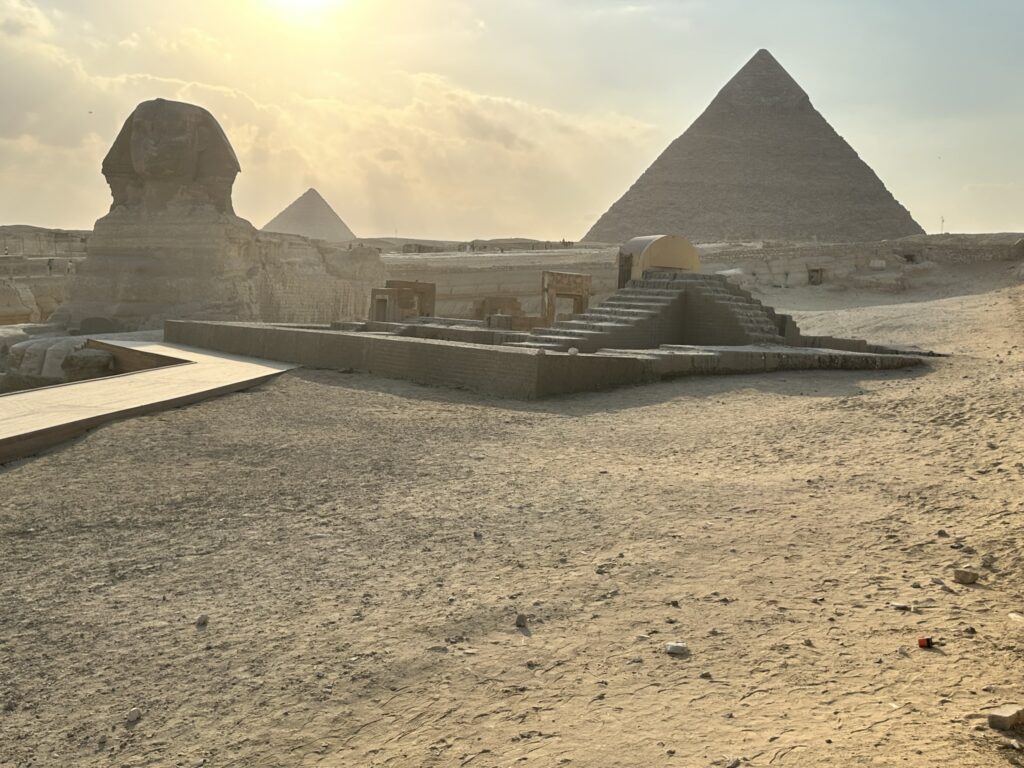
During a recent expedition to Egypt to celebrate a family wedding with team member Marie Ayoub, Terri and Brian Doiron found themselves in awe of the incredible architecture present throughout the country. Like many, they were particularly enamored by the pyramids, which are truly larger than life and equally as mysterious. The trip served as a historical and cultural education, as well as incredible inspiration for COR3’s work back in the United States.
As architects, you can’t help but stand in awe of the sheer scale and precision with which the pyramids were built–a true testament to the ingenuity and skill of ancient Egyptian architects. The Doirons were specifically drawn to the size of the stones used to build the pyramids, limestone and granite blocks weighing several tons each.
The majority of the limestone rocks were quarried from the Giza Plateau and transported using wooden sledges and sheer manpower to bring them to the site of the pyramids. Since limestone typically has a brownish-yellow color, it was only used for the construction of the foundation and inner chambers of the pyramids. For the exterior, White Tura was used to cover the less-valued Giza limestone.
The granite used in the interior chambers and ‘important’ rooms of the pyramids was sourced and transported over 500 miles from the construction site, begging the question, “How was such a feat even possible without modern technology?”
The Doirons were also intrigued by the precision with which the pyramids were aligned. This keen attention to detail not only served religious and spiritual purposes, but also showcased the ancient Egyptians’ advanced mathematical and engineering abilities. To this day, archaeologists are still stumped as to how the pyramids were aligned due to the lack of documentation and detailed records; however, many believe they used sighting rods and possibly the stars as a guide.
Our team thrives on adventures like these that take us out of our comfort zone and challenge us to think outside of the box (or pyramid.) Although we certainly won’t be using the stars and sighting rods as guides on our next project, the inspiration and curiosity instilled by exploring the ancient pyramids will shape our approach to new challenges and encourage us to embrace new perspectives.
